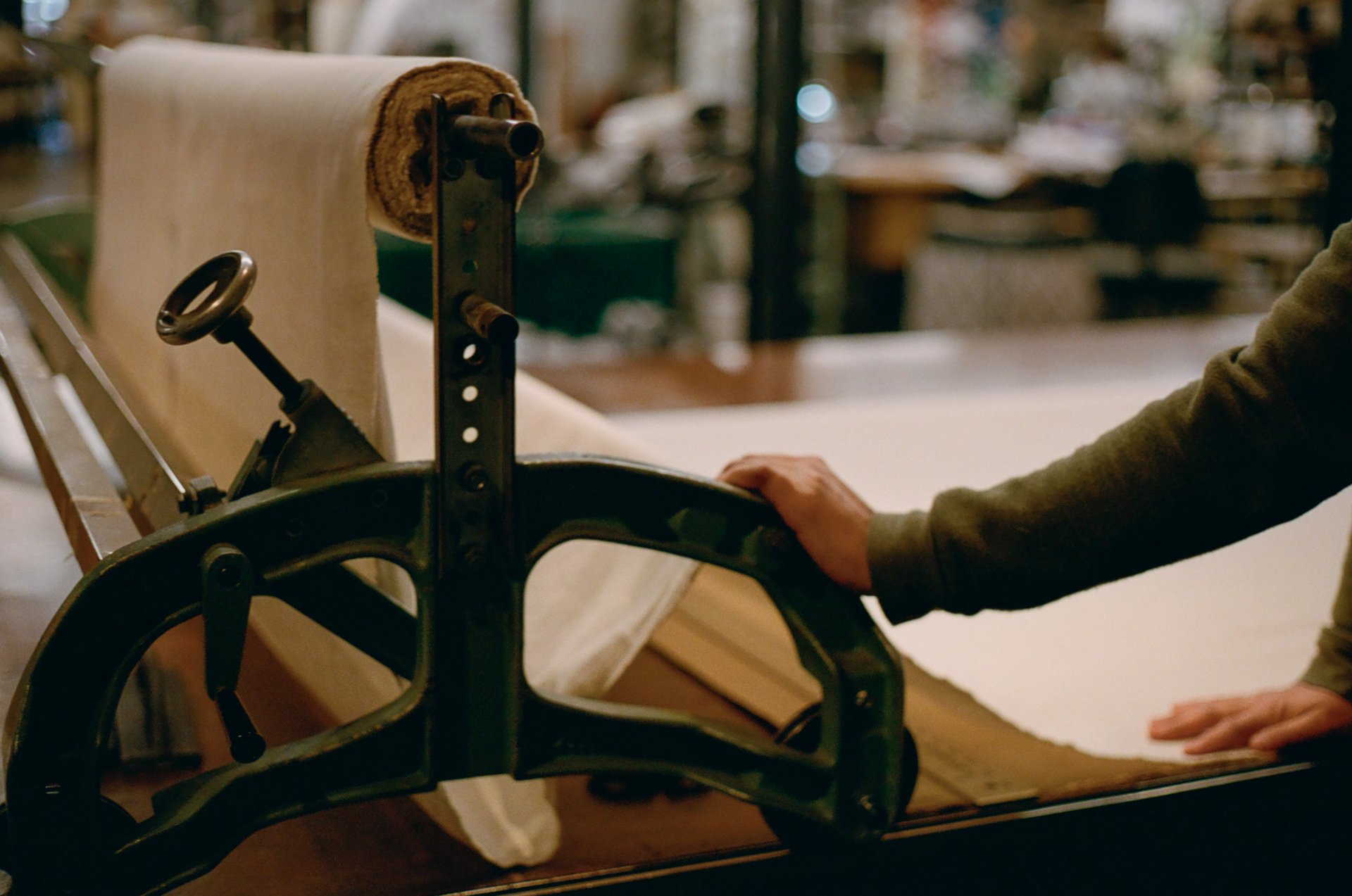a collection of artifacts
each piece is both deeply personal and universal:: a common cement cemetery planter from new england walks; a mosaic from the house of the tragic poet in a forgotten book, lemon tree branches painted on the wall of her childhood house in rural pennsylvania; an early american glass goblet on display in a midwestern museum; a winding heraldic snake from rocky hikes in new mexico. her work is an ongoing list and lifetime collection of objects, images, memories, bits of fabric and scraps on paper derived from where alexis is from and what she’s seen.
fine fibers
from start to finish, there is a human element involved in every part of the process.
the fabrics alexis uses are organically grown in texas as part of an organic growers coop; spun at a mill north carolina (one of only two in the us that process organic cotton) and woven in a small town in pennsylvania on antique looms where her family has deep roots; patterned, cut and sewn in a living wage // low waste studio in north carolina; and naturally garment dyed in pennsylvania by a small team of dyers.
responsible methods
each piece celebrates and supports domestic farming and manufacturing. alexis invests in small businesses that consider the worker and impact on our environment and strives to work in a way that supports slow, responsible and reformative practices that champion small producers.
whether it be the dyers who use collected rainwater for dyeing and compost leftover dyestuff at local sustainable amish farms. the weavers who use regenerative and biodegradable farm grown and raised natural cotton, flax, hemp and wool fiber in the fabrics they design and produce. the cut and sew production facility who save all scrap fabric material to recycle and only throw away a small bag of waste a week. or alexis’ own methods, using nearly
all of the cut-offs from this project to create something else, such as making the doris gene scarf from the remnants of the eddie overshirt, or making handmade paper from the tiny bits from the frances field trouser and the elia crop jacket. every piece of this has been done by small teams (ranging from an individual to around ten at the cut and sew facility) who are passionate about what they’re creating and how they do so. we’re all working to lower our carbon footprint and reliance on fossil fuels, creating something that’s long lasting in the process.








